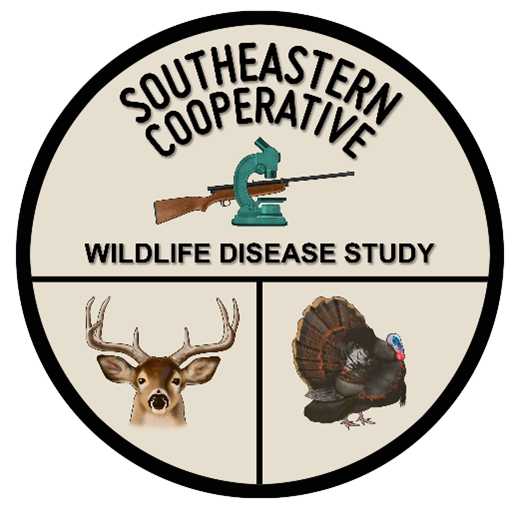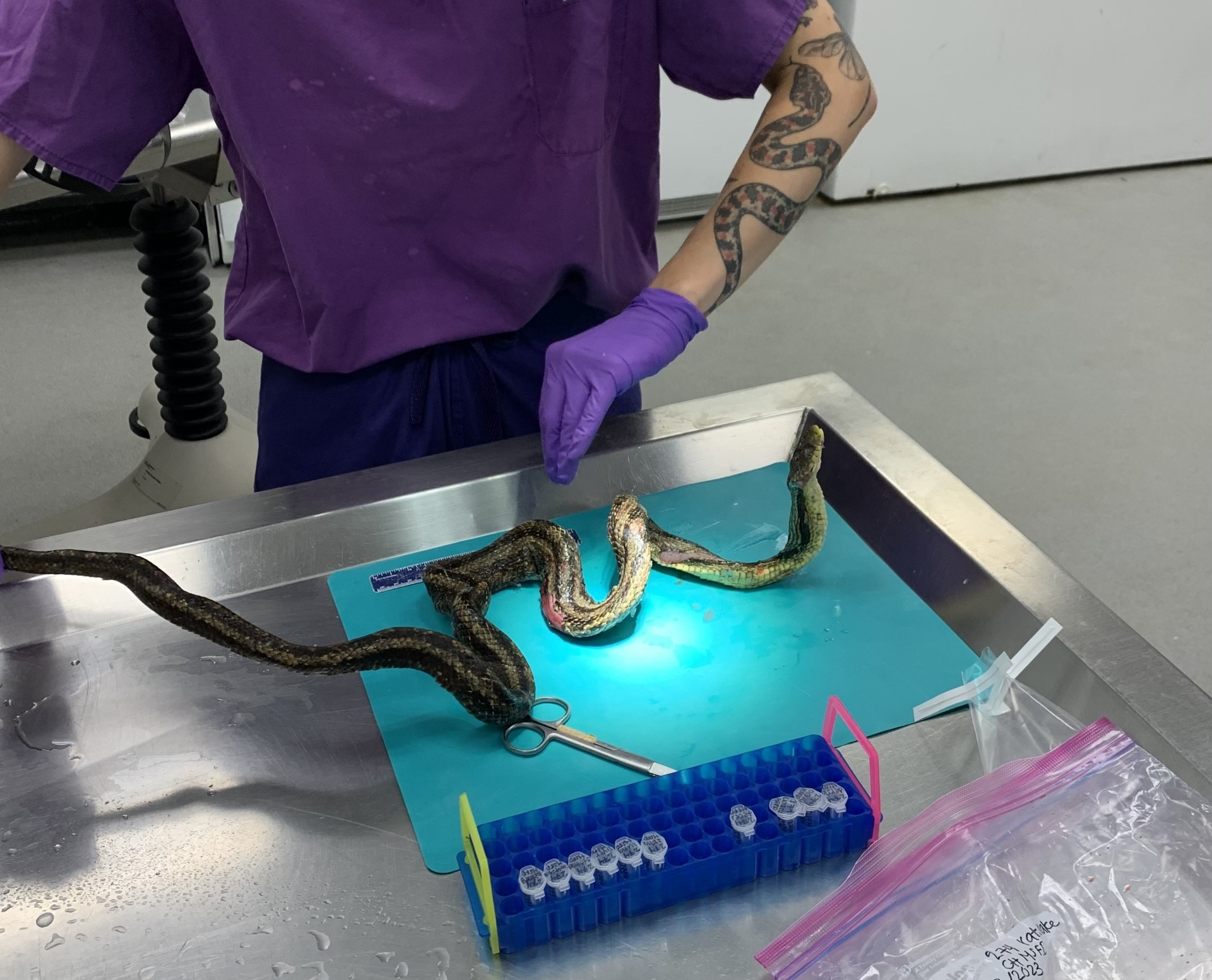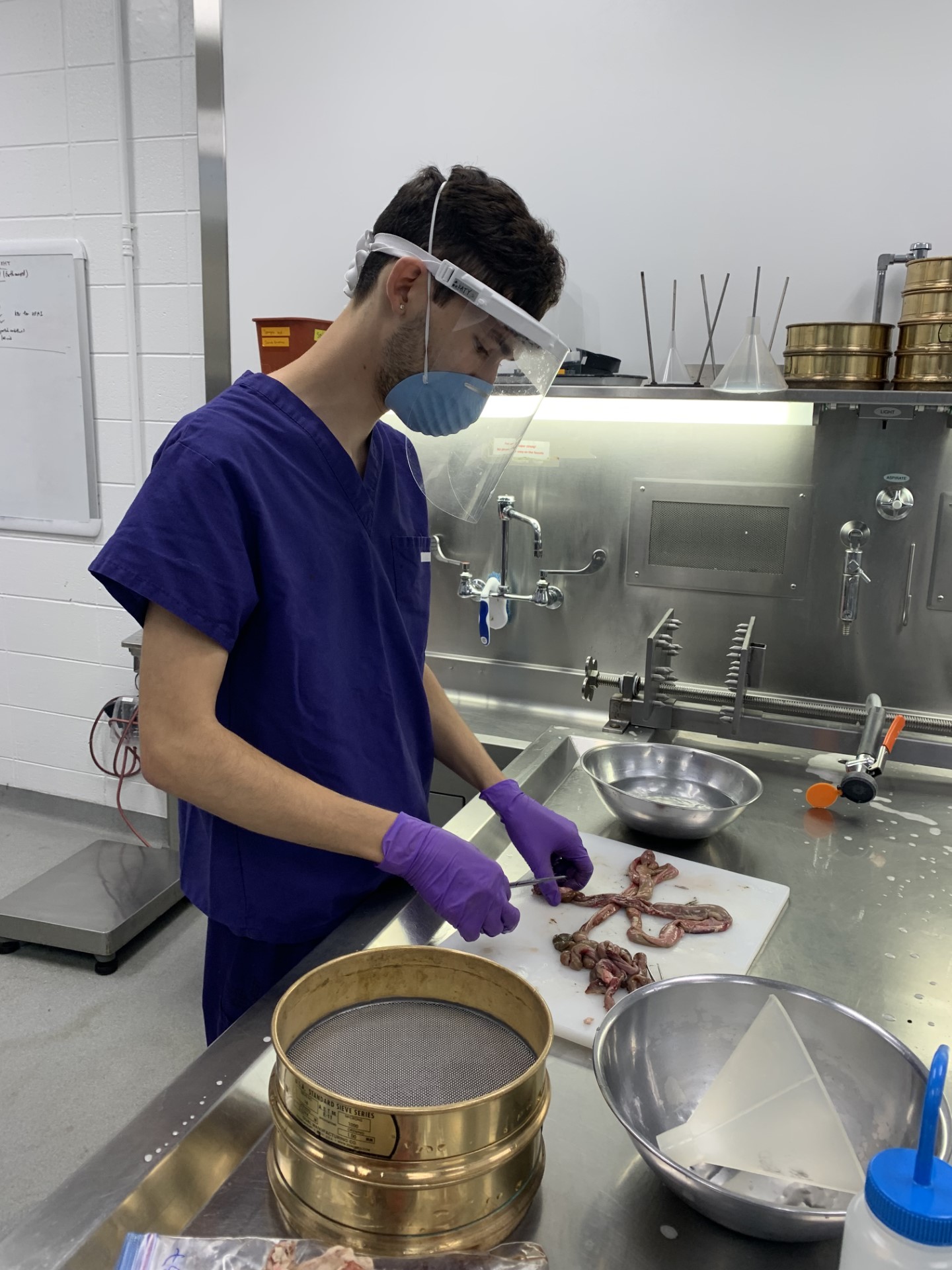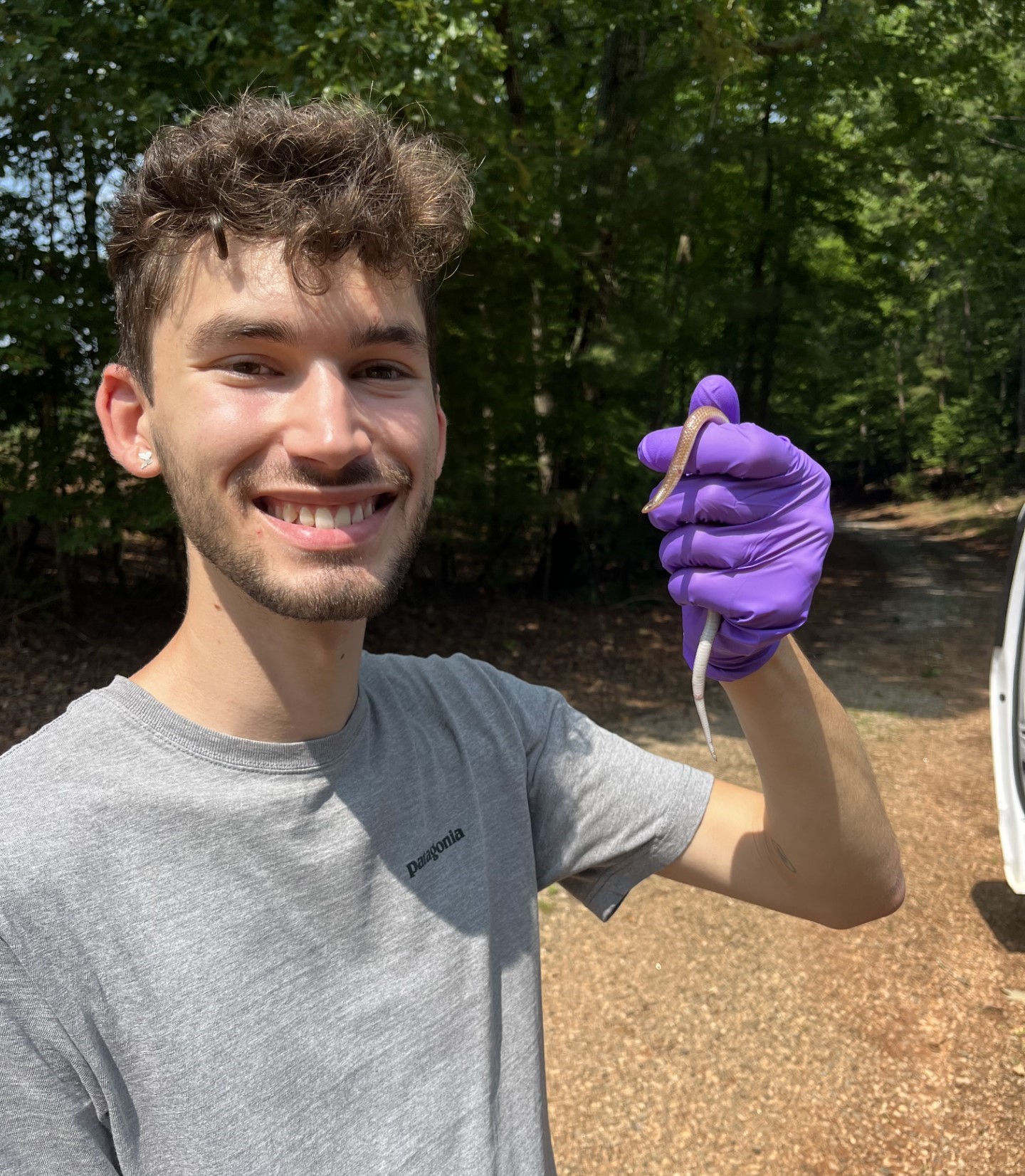Wildlife Detectives: Giving Wildlife a Voice
By Jack Timmons, Cornell CALS ’21, Cornell DVM ‘25
Externship with the Southeastern Cooperative Wildlife Disease Study
I had the opportunity to spend this past summer as a wildlife population health extern at the Southeastern Cooperative Wildlife Disease Study (SCWDS). SCWDS is a collaborative wildlife health partnership based at the University of Georgia (UGA). They provide wildlife disease expertise, diagnostic capacity, and research infrastructure to state wildlife agencies across the Southeastern United States. This collaborative network of state and federal agencies, universities, researchers, veterinarians, and students provides a wide scope of wildlife health expertise, with implications for domestic animal and human health. As a Georgia native, I was excited to spend time down south learning about the wildlife I grew up with!
Practicing Pathology
As an extern, I spent the majority of my time with the diagnostic service. Here, I conducted mortality investigations for wildlife specimens submitted to SCWDS, working alongside diagnosticians and other students. I had the opportunity to perform post-mortem examinations on a variety of wildlife species, from bald eagles and wild turkeys to raccoons and deer. It was satisfying to see how much knowledge I was able to apply from my veterinary training thus far, especially from my experience working at the Janet L. Swanson Wildlife Hospital at Cornell University. On the other hand, I got the chance to learn about the health of wildlife species and the disease issues they face that I was less familiar with – including spending my last day examining tadpoles!
Most importantly, I was exposed to the many causes of mortality for native wildlife. I learned about the varying presentations of important and emerging infectious diseases of wildlife and how to test for them, like highly pathogenic avian influenza and rabies virus. I also witnessed the many ways in which humans are responsible for wildlife mortality, and even assisted with the investigation of a legal case. With limited prior experience in pathology, this was a great opportunity to apply what I had learned through veterinary coursework and to think critically about the diagnostic approach to wildlife mortality events. I gained vital confidence and independence in performing necropsies, while appreciating the privilege of handling deceased wildlife and having the chance to shed light on the health challenges various species face.
Opportunities to Explore
While most of my time was spent with the diagnostic service, I also had the opportunity to connect with people in the many other roles at SCWDS. This included assisting researchers with ongoing wildlife health surveillance studies. Each week, I assisted with an ongoing surveillance project for Echinococcus, a tapeworm of human health concern, by examining gastrointestinal (GI) tracts from wild coyotes and foxes. I also became involved with a student project studying wild snake diseases in the Southeast. I assisted with the necropsies of several native snake species, and even spent a day in the field catching and sampling wild snakes in UGA’s teaching forest! Actively participating in these projects yielded great insights into the diversity of challenges facing the health of native wildlife, and offered a glimpse into what a future career focused on wildlife population health could look like.
Personal Impact
This externship provided an invaluable view of what it means to study wildlife health. More than anything, I learned the importance of collaboration in this field. With so many divisions of wildlife health and management, diseases, and species to study, it is imperative to embrace a variety of approaches to wildlife health. It was eye-opening to see the many roles that veterinarians can play in this effort. The pathologists, researchers, state agency veterinarians, wildlife rehabilitation clinicians, and of course students, all play critical roles in understanding and mitigating the impacts of wildlife diseases. Each area of expertise provides a unique entry point for approaching this common goal.
As a veterinary student, it was exciting to be able to apply the knowledge I have accumulated thus far, while gaining a new appreciation for what remains to be learned. I came away from this experience with a greater understanding of the disease concerns facing our native wildlife, and with new skills and resources I can use to move forward with my own contribution to wildlife health. Most importantly, I was comforted and inspired by the many people I met who are so dedicated to giving our native wildlife a voice, and I’m excited to continue exploring my own place in that effort.
Acknowledgements
I would like to acknowledge the Cornell Yang Center for Wildlife Health for funding this project through the Student Support Fund. I would also like to acknowledge the Evan’s Comparative Anatomy Award for providing additional funding for this project. I am grateful for the staff and members of SCWDS for hosting and supporting me, as well as my fellow extern and Cornell faculty for their support.
Jack Timmons, class of 2025, is a third-year veterinary student at the Cornell University College of Veterinary Medicine. He received a BS in Animal Science in 2021 from the Cornell University College of Agriculture and Life Sciences. Jack is interested in free-ranging wildlife health and plans to pursue a career in pathology. He has a particular interest in wild avian health and disease.




